#cynipidae
Explore tagged Tumblr posts
Text


smaller oak galls like Neuroterus often go unnoticed due to being created on the underside of leaves and overall having a less flashy appearance, but N. quercusbaccarum has never disappointed me. although they're not always colorful, as they gradually darken with age it's as if every leaf you look under has differently flavored skittles uncomfortably bunched together (with some bonus protein inside each one)
(October 7th, 2024)
76 notes
·
View notes
Text

Happy gall week!! Here's a painting I forgot to put online anywhere
#gall wasps#bugs#inaturalist#blue oak#cynipidae#galls#striped volcano gall#urchin gall#disc gall#drawing stuff#acrylic#artists on tumblr
111 notes
·
View notes
Text
https://www.instagram.com/share/reel/BAEdbehrRy
My friend Sloan, is a brilliant wasp enthusiast. Wasps are so metal.
#hymenoptera#entomology#insect#wasp#wasps#apocrita#Eulophidae#Cynipidae#Euderusset#Bassettiapallida#CryptKeeperWasp
13 notes
·
View notes
Text

Scientific Name: Amphibolips confluenta Common Name(s): Spongy oak apple gall wasp Family: Cynipidae (gall wasp) Life Stage(s): Larva Location: Plano, Texas Season(s): Winter
This is what one of these looks like on the inside.
#Amphibolips confluenta#spongy oak apple gall wasp#Cynipidae#Plano#Texas#winter#brown#oak apple#gall wasp#Hymenoptera#gall#insect#bugblr
11 notes
·
View notes
Text
This is actually only true of some gall wasp species. Whether a gall has just one larva or multiple depends on the species (and generation)! As far as I can tell, the gall in this meme is the asexual generation of Amphibolips quercuspomiformis, the live-oak apple gall wasp, which does in fact contain multiple chambers with multiple developing larvae (source). Here's what the inside of a developing gall of this species looks like:
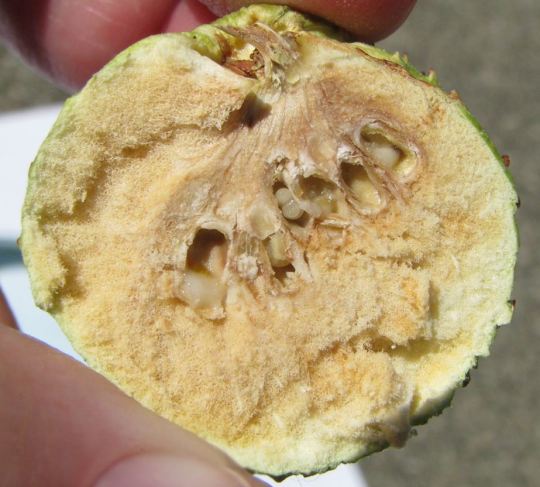
(image via Karlyn H. Lewis)
As you can see, there are multiple larvae inside.
It's an understandable confusion because there are some very similar galls that only have one chamber with a single larva inside. Even within the same genus, there are numerous other species whose galls only contain one larval chamber. The species you showed a cross-section of is Andricus vaccinifoliae, the Golden Oak Apple Gall Wasp.
The information about the sexual and asexual generations is accurate, although it's worth noting that not all gall wasps have this alternating of generations. And there are many species that we simply don't know enough about to know whether they have it or not. (There are so many undescribed gall wasp species.)
There's a huge variety of wasp galls! The images and diagrams you used are from references for a variety of different species. What's true of one isn't true of them all! Here's a few other closely related galls:
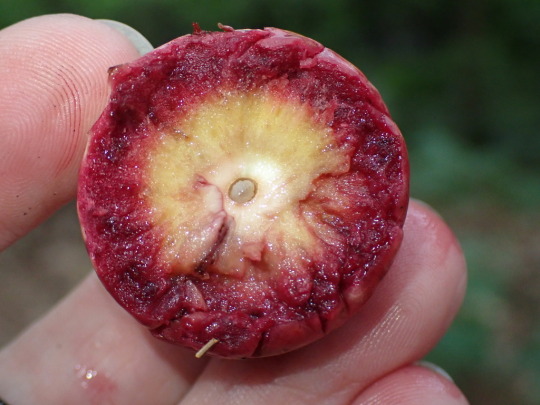
Amphibolips quercusjuglans, Acorn Plum Gall Wasp, via mamiles on inaturalist
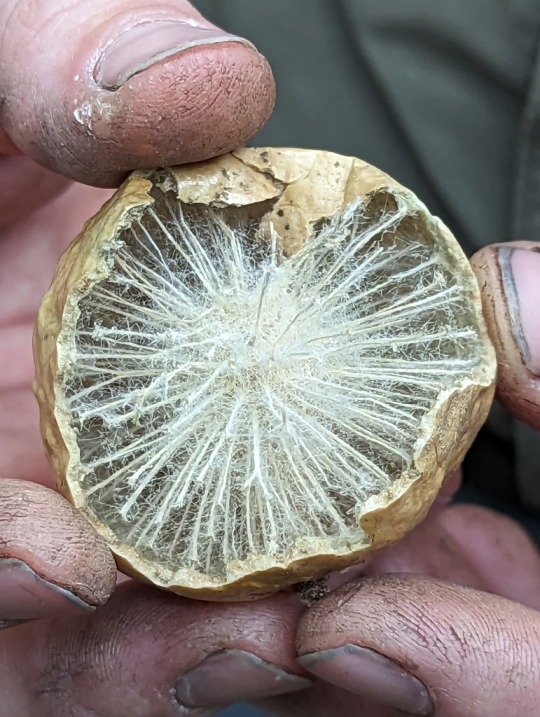
Amphibolips confluenta, Spongy Oak Apple Gall Wasp, via Amber Leung on inaturalist
And that's just the same genus, with similar structured galls! Galls are crazy diverse, both inside and out. This is all just oak gall wasps, which are only the tribe Cynipini. The rest of Cynipidae contains other species which gall different plants besides oak (such as blackberries, rosinweed, and more). Meanwhile, numerous other families of wasps, mostly within Chalcidoidea, also make galls (and this evolved completely independently, numerous times). Aaaand then there's other insects that make galls, too... it's a beautiful world!
Lastly, if I'm going to be a little pedantic: even in single-chambered galls, there might be multiple women. Galls are often occupied by parasitoids (who always eat the gall-inducer) and inquilines (who live inside the gall to eat the plant tissue and take advantage of the shelter it provides, though they sometimes also eat the gall inducer while they're at it), which are often other tiny wasps! So, sometimes you'll end up with multiple wasps from a single gall, even if there was only one gall-inducer in there to start with. The joys of symbiosis <3
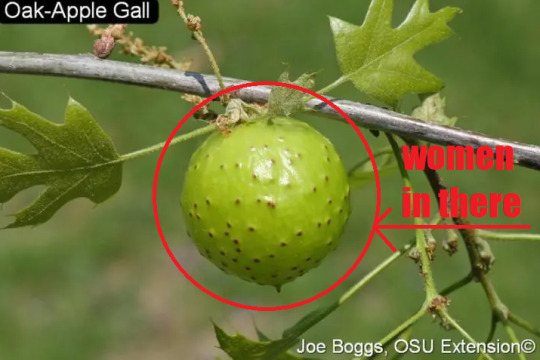
#bugs#hi i'm crawling out of oblivion to talk about galls#i don't even have a tag for informational replies and stuff#uhhhh#galls#cynipidae#hymenoptera#entomology posting#entomology#gall wasps#amphibolips#bugposting#wahoo
5K notes
·
View notes
Text
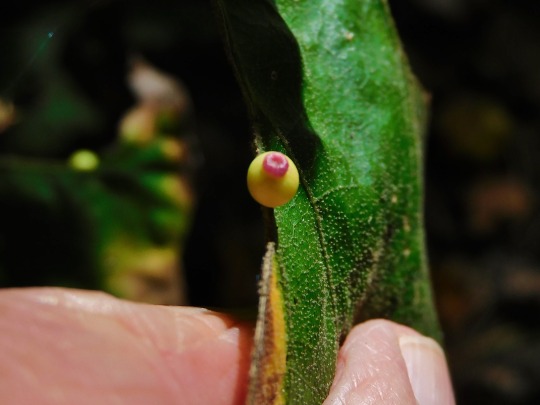

A small gall left behind by some Gall Wasp (family: Cynipidae...)...
#nature#my photography#nature photography#insect eggs#backyard nature#wasps#wasp gall#galls#wildlife photography
6 notes
·
View notes
Text
Les guêpes gallicoles ont généralement des glandes à venin de grande taille par rapport à leur corps, ce qui suggère que leur venin joue un rôle clé dans la formation des galles végétales
See on Scoop.it - EntomoNews
Wasps that generate plant growths called galls commonly have large venom glands relative to body size, suggesting a key role for venom in gall formation.
Gall-Inducing Wasps Have Enlarged Venom Glands, Study Finds
By John P. Roche, Ph.D.
01.12.2023
-------
NDÉ
Traduction
Les guêpes qui produisent des galles ont des glandes à venin hypertrophiées, d'après une étude Une nouvelle étude révèle que les guêpes qui produisent des excroissances végétales parasites appelées galles ont généralement des glandes à venin de grande taille par rapport à leur corps, ce qui suggère que leur venin joue un rôle clé dans la formation des galles végétales.
[Image] Une femelle de guêpe gallicole pond des œufs dans la nervure centrale d'une feuille de chêne rouge. Les guêpes de la famille des Cynipidae utilisent des composés pour stimuler la croissance d'excroissances protectrices, appelées galles, dans lesquelles leurs petits peuvent se nourrir et grandir dans une enceinte protectrice. Dans une nouvelle étude sur les guêpes à galles réalisée par des chercheurs de la Penn State University, les chercheurs ont examiné l'anatomie des espèces de cynipides et ont découvert que les guêpes inductrices de galles ont des glandes à venin particulièrement grandes, ce qui implique le venin dans l'induction des galles. (Photo d'Antoine Guiguet, Ph.D.)
L'étude
Comparative anatomy of venom glands suggests a role of maternal secretions in gall induction by cynipid wasps (Hymenoptera: Cynipidae) | Insect Systematics and Diversity | 13.10.2023 https://academic.oup.com/isd/article/7/5/3/7310975?login=false
0 notes
Text
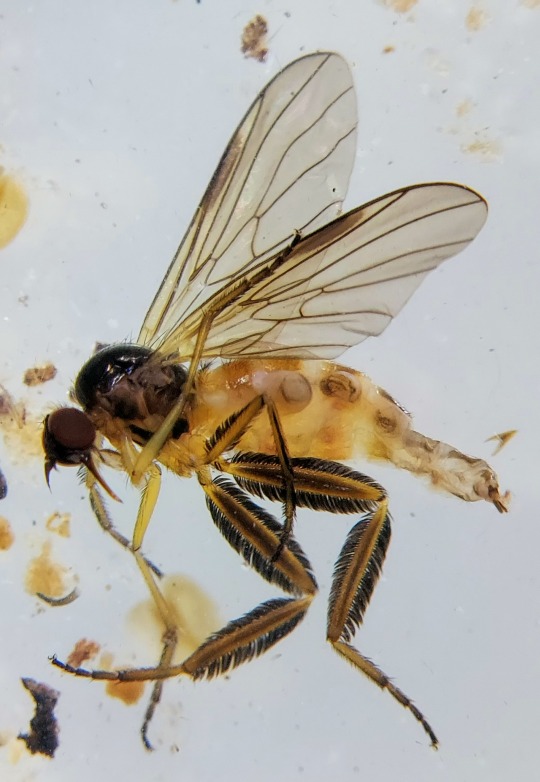
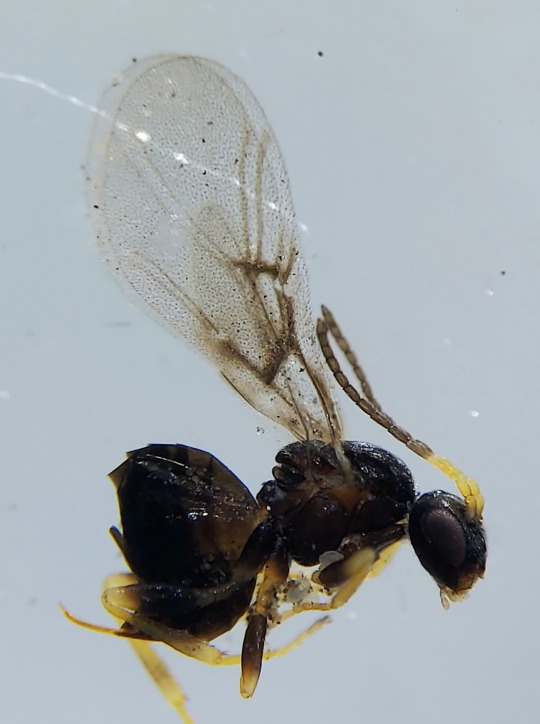
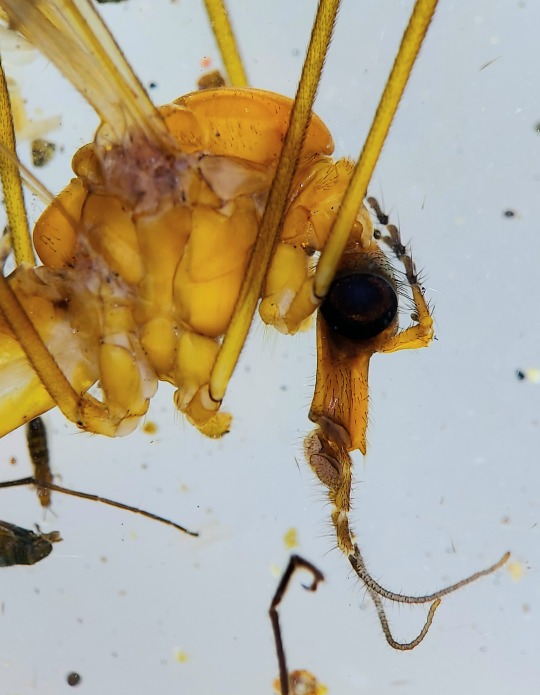
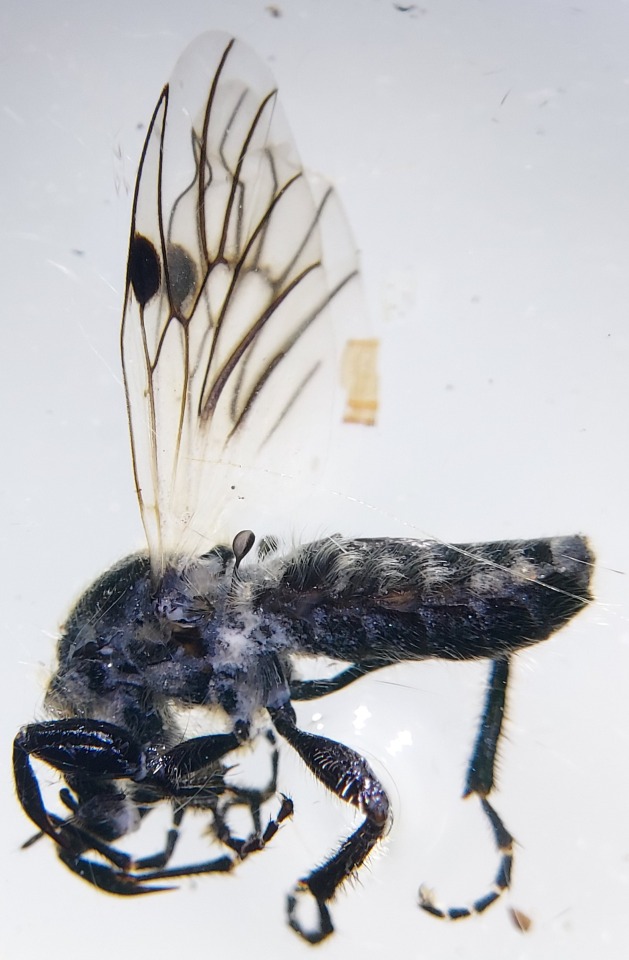
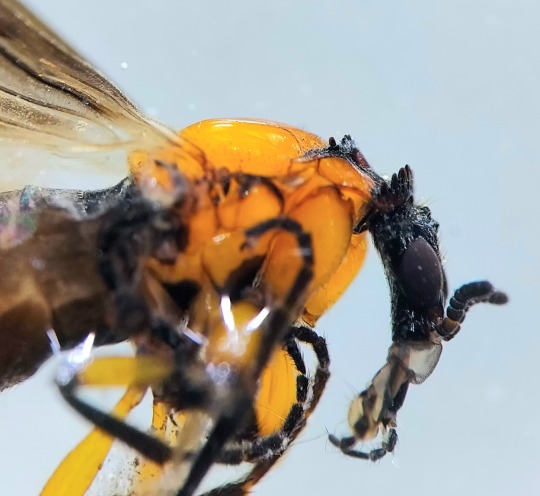
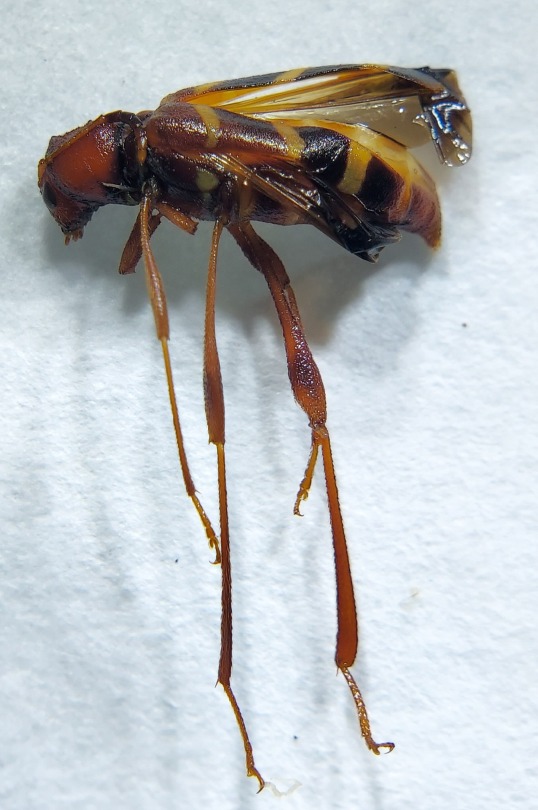
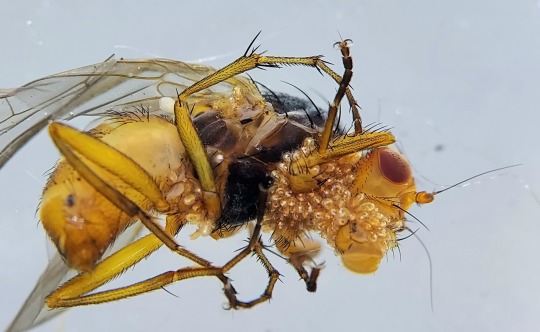
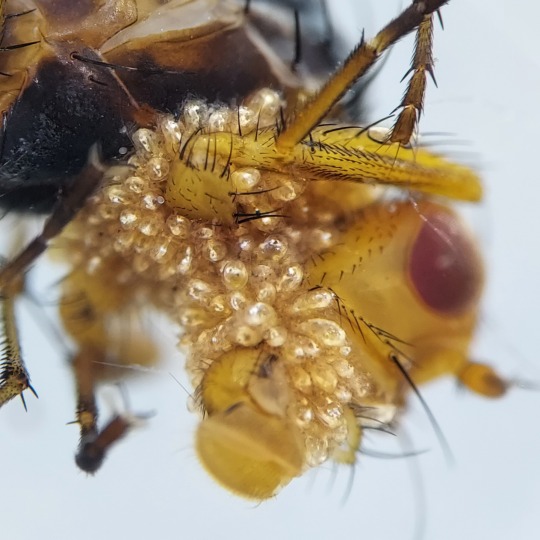
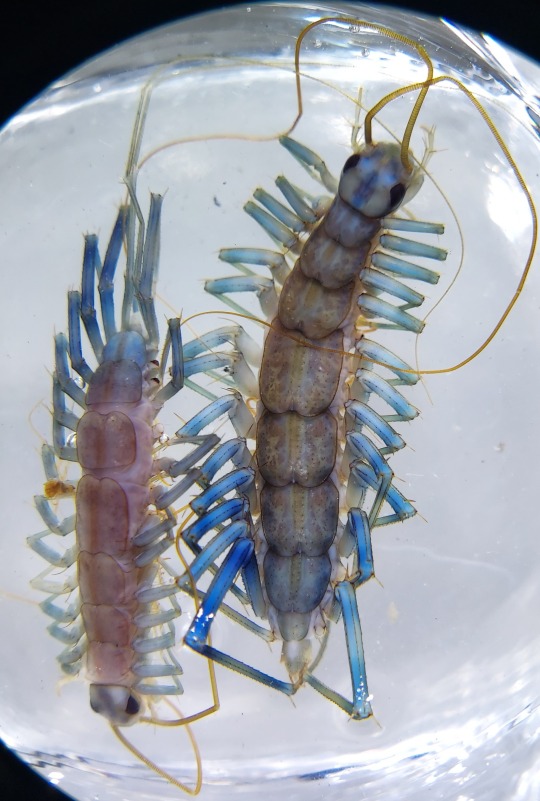
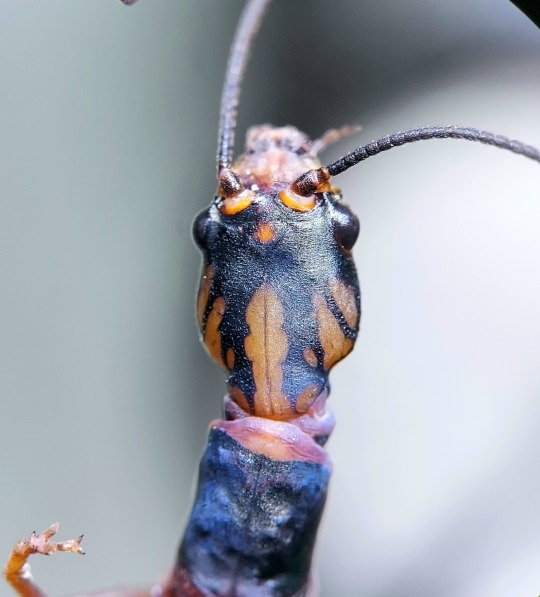
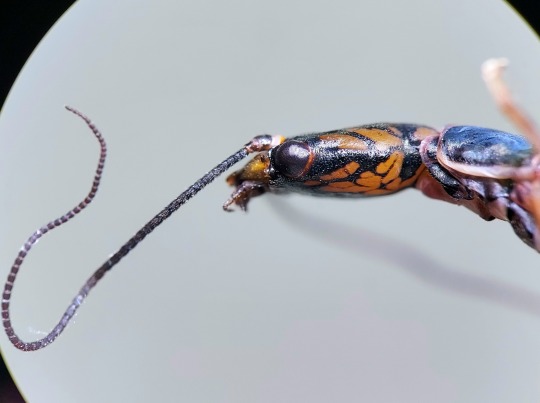
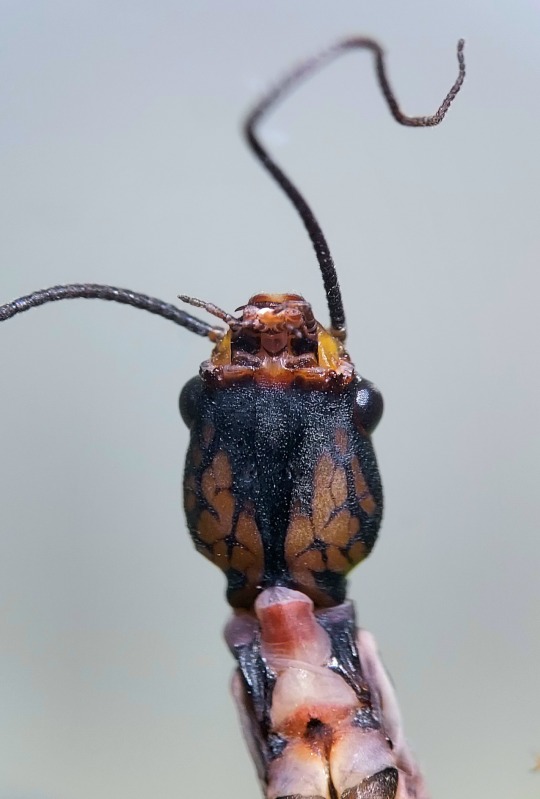

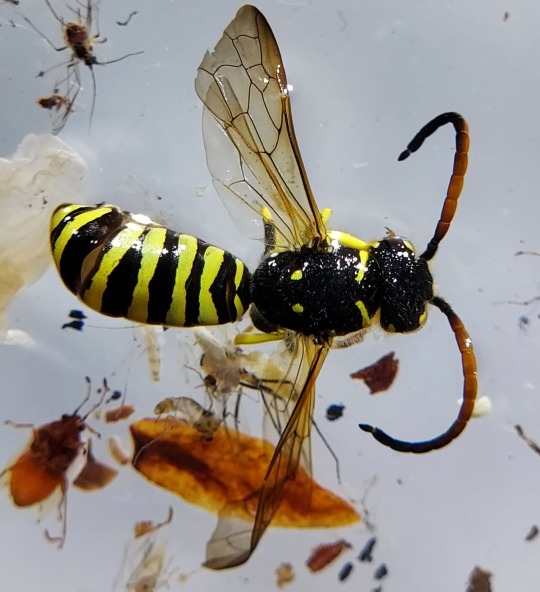
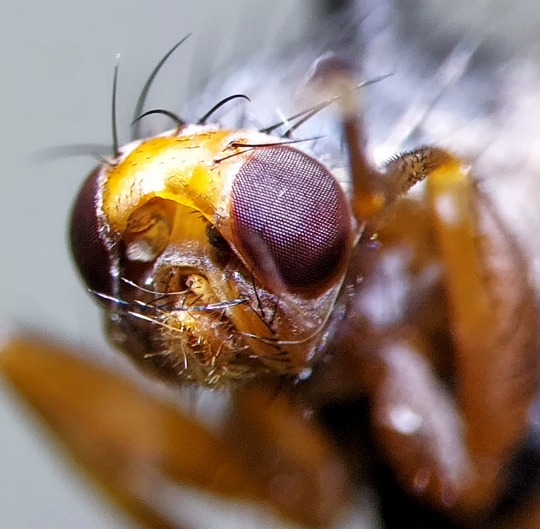
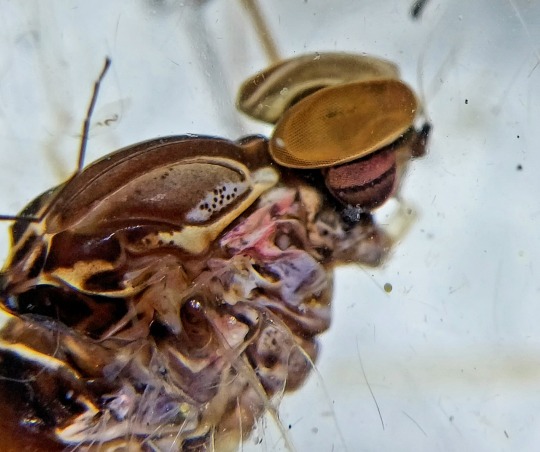
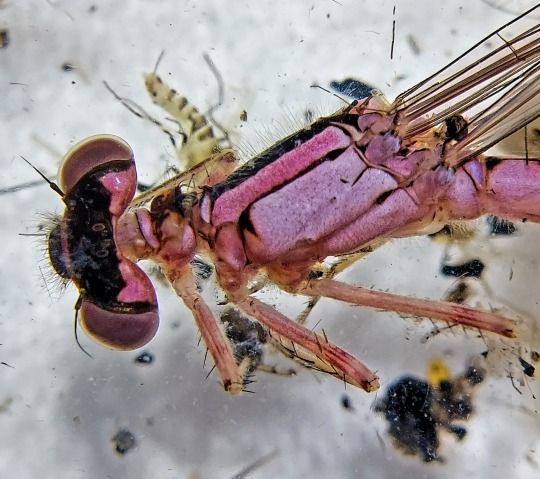
some bugs i saw at work 15.VI.2022 - 16.VI.2022
#diptera#empididae#hymenoptera#cynipidae#tipulidae#bibionidae#coleoptera#cerambycidae#Scutigeridae#raphidioptera#inocelliidae#crabronidae#muscoidea#ephemeroptera#baetidae#odonata#zygoptera
487 notes
·
View notes
Text
I don't mind the screenshot at all, it gives me more chance to ramble about this!
Absolutely true, since getting into hymenoptera taxonomy I've seen firsthand how much it never ends-- definitely there is much more to describe than could be be done in a lifetime. It's beautiful and daunting and exciting to me.
My current work (which is kind of an accidental "basically a master's thesis but without getting a master's degree") involves describing a handful of new species in the chalcid genus *Eurytoma* (family Eurytomidae), but that genus is massive and definitely in need of revision. Trouble is that they're also very difficult, so many of them look near-identical, even to me, and I've been staring at them under microscopes for the better part of a year at this point. Still, someone will have to do it at some point......there's a possibility that someone could end up being future me, but who knows, haha.
Meanwhile, I've also been involved in a variety of side projects with the grad student I work under, who mostly does gall wasp stuff. Front that I can say that the superfamily Cynipoidea is due to get exploded and restructured one of these days-- another Chalcidoidea situation where you're going to end up with a bunch of new families. Cynipidae and Figitidae definitely arent monophyletic ❤️. But that's a huge undertaking, and only in the earlier stages at this point, so it's more of a "that'll happen at some point years down the line" rather than a "there's actively a manuscript being written for this"
but on a smaller scale there's a LOT of work to be done in cynipoidea. especially outside of cynipini (the oak gall wasps), there's literally like....4 or 5 people working on non-cynipini total and 2 of them are in the lab I work with. I could be a 3rd person if you count my involvement here.
And at this point it's a really common experience in this lab to have moments of "oh there are so many more species here than people thought", it's practically par for the course! The inquiline gall wasp genus I mentioned in the tags before, Ceroptres? Has like less than 20 described species in the US rn. I've been involved in the paper where another 22 of them are being described, and it's only scratching the surface because they're a lot more specialized than we thought. If someone went through unsorted material from that genus at one of the major museum collections they'd easily find, what, hundreds of new species?
And this isn't that unusual! The recurring theme is that as soon as you start to look closer, especially with host specialization in mind, you realize "dear god there are hundreds of thousands of undescribed species"
it's beautiful
she be like “aw tysm” and I be like “who told you? anyway, this is why the order hymenoptera (bees/wasps/ants) likely has more species compared to the order coleoptera (beetles) despite decades of us thinking beetles had the most for the past decades if not hundreds of years…”
#long post#research rambling#hymenoptera#taxonomy#im literally just a research technician btw. I am not yet in grad school#just as a disclaimer
465 notes
·
View notes
Text
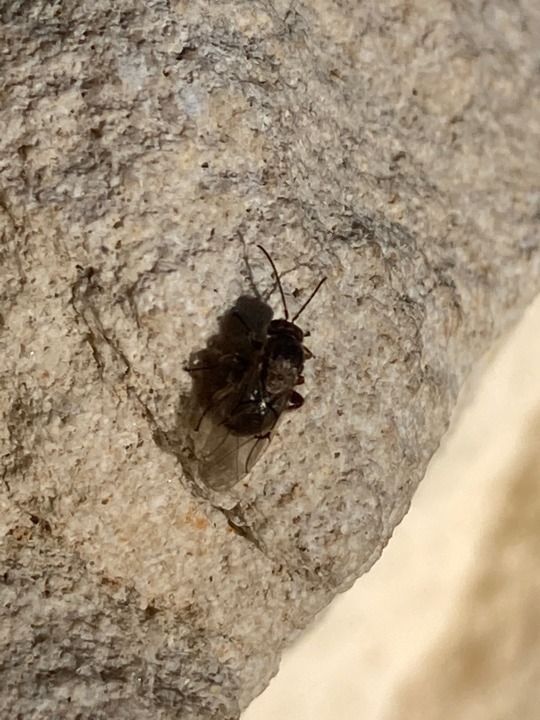
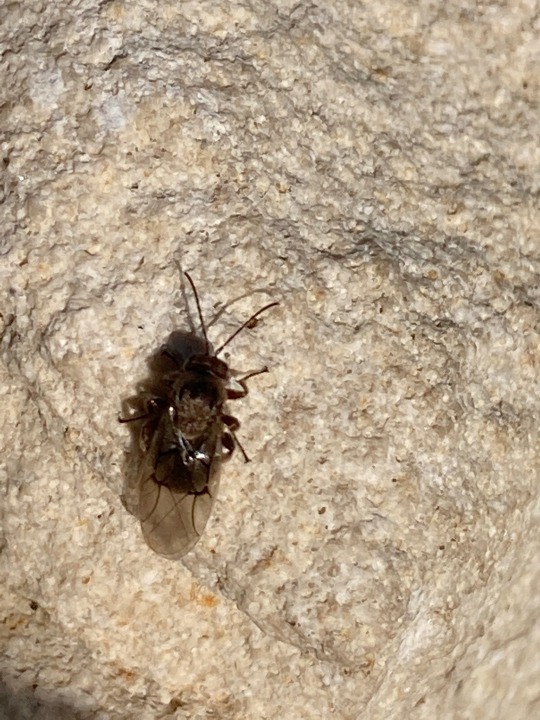

2 notes
·
View notes
Photo
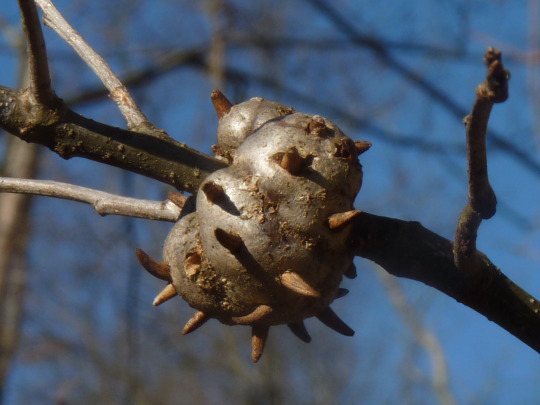
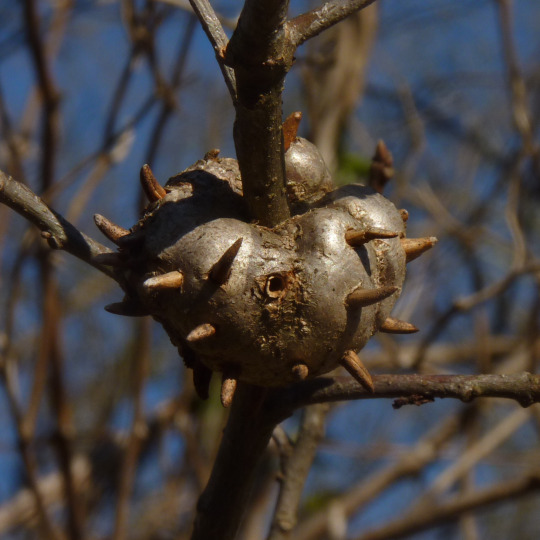
Gall made by a Horned Oak Gall Wasp (Callirhytis cornigera) (by me)
#Horned Oak Gall Wasp#Callirhytis cornigera#Callirhytis#Cynipini#Cynipinae#Cynipidae#Cynipoidea#Parasitica#Hymenoptera#Insecta#Hexapoda#Arthropoda#insects#wasp#parasitic wasp#gall#oak#winter#Delaware and Raritan Canal#Delaware and Raritan Canal State Park#Somerset County#New Jersey#mine
2K notes
·
View notes
Text

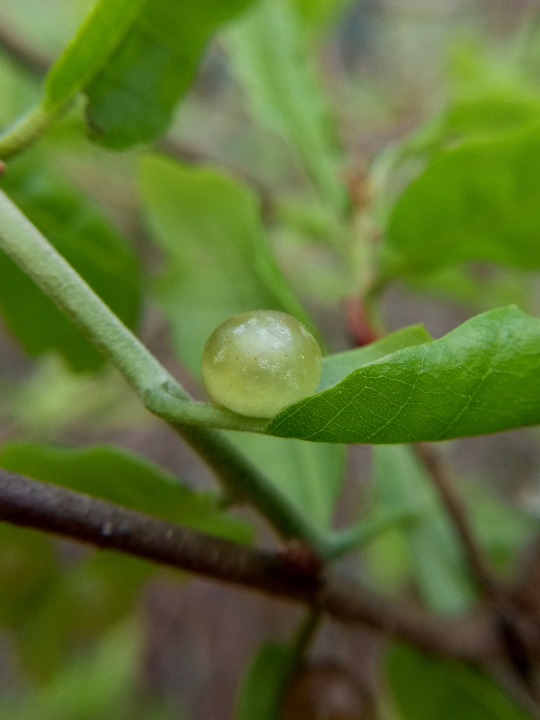
some delicious peas for your soup or stew. i've posted about Neuroterus quercusbaccarum before, and this is their spring generation, forming blobby/spherical galls on young leaves rather than skittles on the underside of grown ones. these don't tend to last as long as the Spangle Generation™ from late summer/early autumn in my experience, so they're always a cool find
(March 24th, 2025)
22 notes
·
View notes
Text
Oak galls: currants and spangles
Oak galls: currants and spangles
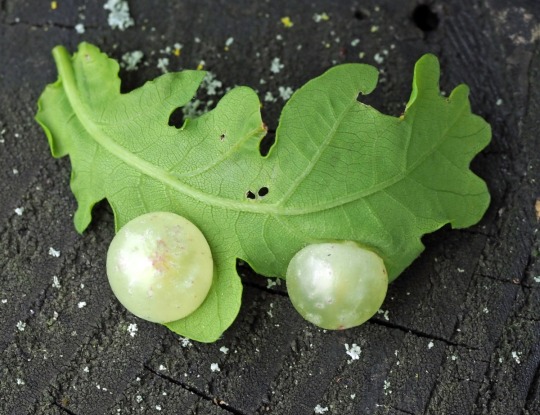
View On WordPress
#currant gall#cynipid wasp#cynipidae#Cynipini#Neuroterus quercusbaccarum#Oak gall wasps#oak galls#spangle galls
0 notes
Text
A bunch of Diplolepis rosae embedded in a tiny pincushion. One of the common names for this wasp is Robin's pincushion gall wasp, but then my brain went off on a tangent, and I just imagined a bunch of Cynipids sticking out of an actual pincushion from their ovipositors. Don't mind me.... 😅
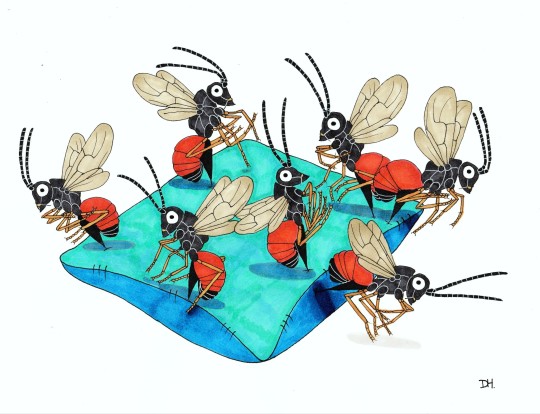
#hymenoptera#insect#entomology#wasp#wasps#apocrita#cartoon#comic#parasitica#Cynipidae#Diplolepisrosae#pincushion#silly#RobinsPincushionGallWasp#GallWasp
38 notes
·
View notes
Photo
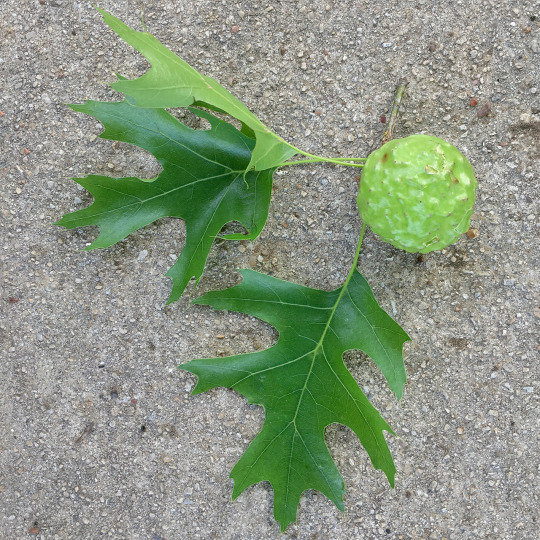
Scientific Name: Amphibolips confluenta Common Name(s): Spongy oak apple gall wasp Family: Cynipidae (gall wasp) Life Stage(s): Larva Location: Allen, Texas Season(s): Spring
There is no wasp larva visible in the photo, but the golf ball-sized lump is the gall it formed. In botany, galls are abnormal growths on plant tissue, and they can be caused by insects, mites, nematodes, fungi, bacteria, and viruses. Insects and mites (usually) have preferred host plants, and the galls they form are distinctive enough that we can determine with reasonable confidence what the causative organism is by examining only the gall and the plant it’s found on, without needing to see the culprit itself.
The purpose of a gall is to provide food and shelter for the occupant(s) inside. During periods of plant growth, such as spring, an insect or mite will take advantage of the rapid cell division in its host and hijack these cells into making a gall instead of developing into regular plant tissue. For oak gall wasps, the process begins when an adult female inserts her ovipositor into a leaf bud to lay an egg. The interaction between the chemicals released by the insect and the host induces cell growth on the plant to form a gall as well as redirect plant nutrients into the gall for the larva to consume. As the gall matures, its color turns from green to tan.
There are hundreds of species of oak gall wasps. “Oak apple�� is a common name for these galls, supposedly for their resemblance to apples, but they remind me more of limes than apples. At least it does feel spongy with Amphibolips galls, as the gall is mostly hollow inside, with filaments suspending the larval capsule at its center.
While in strict terms gall formation is a parasitic process, where the wasp gains all the benefits and the oak receives nothing in return, galls affecting leaves seldom cause serious harm to the tree. And because galls are affixed to the plant, they’re easy targets for predators looking to eat the larvae inside. Galls may be unsightly, but they’re generally not considered problematic to the host plant.
#Amphibolips confluenta#spongy oak apple gall wasp#Cynipidae#Allen#Texas#spring#green#oak apple#gall wasp#Hymenoptera#gall#insect#bugblr
5 notes
·
View notes
Photo

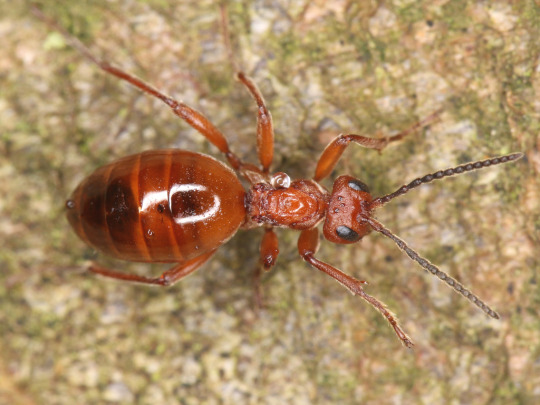
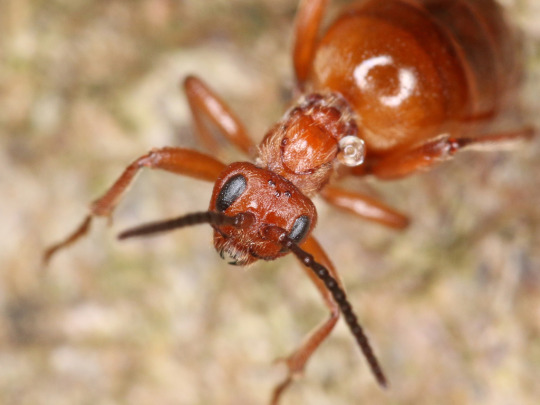
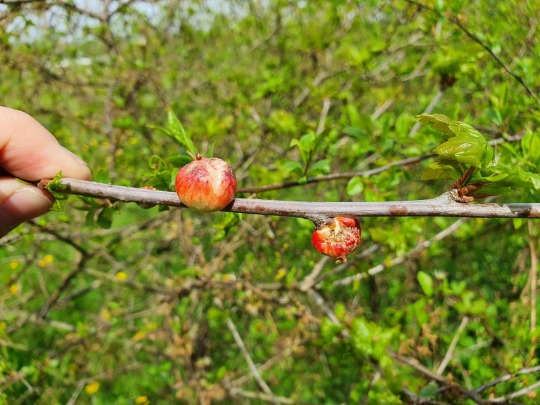

Oak apple gall wasp, Biorhiza pallida, Cynipidae, Hymenoptera
Pictured is a female oak apple gall wasp and the apple-like galls that form around her larvae in oak trees. This species is found throughout Europe. In addition to feeding and sheltering the oak apple gall wasp larvae, the galls house several other species of gall wasp and at least 20 species of hyperparasitoids that feed on the larvae.
Photos 1-3 by zmrdk, 4 by bclunie, and 5 by cedzz
#animals#curators on tumblr#insects#bugs#wasp#gall wasp#gall#oak apple gall wasp#one nice bug#dang it's crowded in those galls#also she is thick and beautiful wow
335 notes
·
View notes